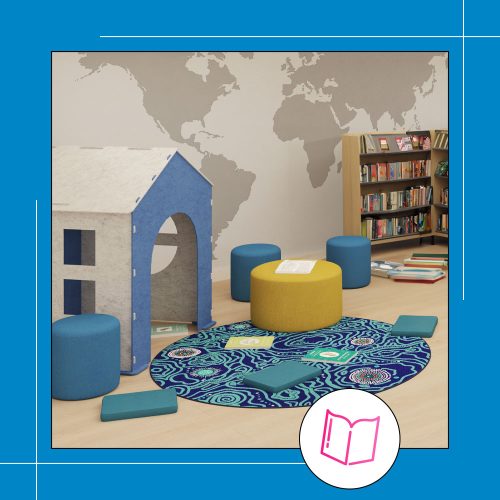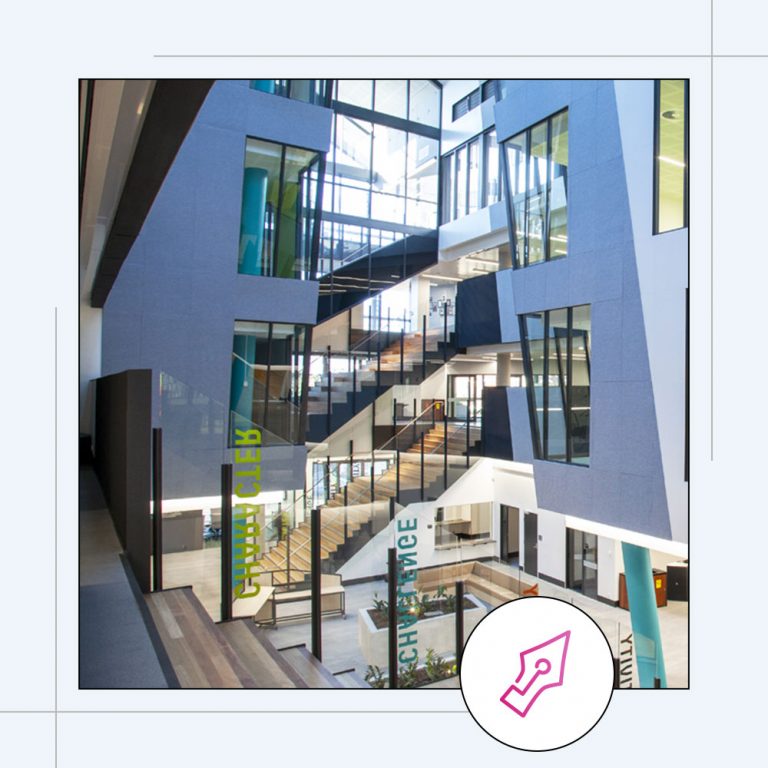Space Signals: Using Rugs to Create Learning Zones
We regularly speak to educators, administrators, and designers who are seeking new ways to create learning environments that inspire and support their students. Establishing learning zones with classrooms is a method of achieving these goals that has gained traction in modern Australian classrooms. And for good reason: these carefully curated ‘spaces-within-a-space’ allow teachers to cater to specific learning styles, activities, and curriculum areas. However, creating them in an inexpensive way that maximises space, functionality and aesthetic appeal can be challenging.
While furniture is a great way to build learning zones, it’s the floor, or more specifically what we place on it, that can offer educators some interesting possibilities. In this post, we’ll delve into the significance of learning zones, and discuss how classroom rugs can serve as useful tools in crafting these dynamic educational environments.
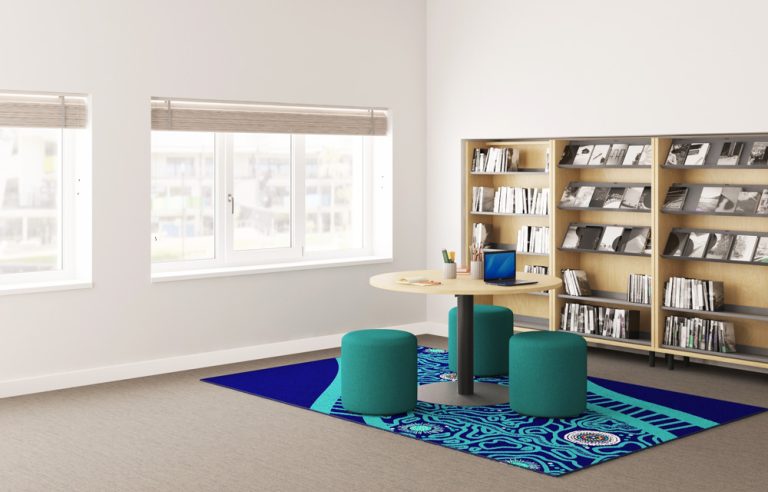
Why are learning zones so useful in today’s classrooms?
Learning zones are essentially distinct areas within the classroom that have been purposefully designed to differentiate between different modes of learning and teaching. Their importance has been elevated as schools take a cross-curricular approach to learning, allowing students to understand the interconnected nature of knowledge and blend subjects like music and technology, science and art.
They are critical in allowing educators to differentiate instruction effectively, catering to diverse learning styles and abilities within a single classroom. Accommodating different learning modes – collaboration, feedback and reflection, discussion, direct instruction – becomes possible: from quiet reading or independent work corners to group project work areas, students can engage with content in ways that best suit their learning styles and needs.
Reflecting contemporary teaching theories, learning zones also allow the physical environment to take on the role of teacher: strategically designed spaces with the right furniture, decor and learning tools invite students in to interact and experiment autonomously. This enables teachers to run several activities simultaneously while they act as supervisors or guides to support their learners.
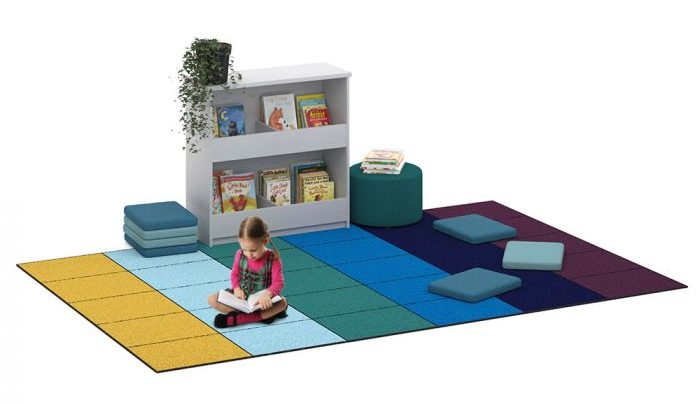
Thinking beyond furniture when creating learning zones
The comfort, visual appeal and portability of rugs make them versatile tools, allowing educators to:
- Easily delineate spaces: While furniture is essential for some activities and learning zones, it isn’t always necessary to delineate learning zones themselves. In some cases, using furniture to delineate zones can reduce the available workspace. The contrast of a brightly coloured or patterned rug against the plain carpet usually used in schools, offers enough visual contrast to indicate that a space has a specific purpose, such as a discussion circle or ‘mat time’ direct instruction space. Educators can even choose to associate a specific colour or shape with a specific purpose e.g. circular red rugs for group-work areas, square blue rugs for individual work.
- Re-arrange zones quickly: Some learning zones, like quiet reading areas or group-work areas, are used year-round, however theme-based zones are rarely permanent. In both cases, rugs, which can be lifted and moved easily, are the perfect option. Rugs allow educators to reconfigure classroom layouts and experiment with different arrangements to accommodate evolving teaching strategies and student preferences.
- Enhance Comfort: Rugs provide a comfortable and inviting atmosphere for students to engage with their learning activities. Soft, plush rugs are ideal for seating on the floor, and encourage relaxation and focus during independent work or quiet reading sessions. More durable rugs, however, can withstand the rigors of collaborative group work or interactive sessions. Rugs can also assist with temperature control in cooler climates.
- Provide Acoustic Control: Rugs aid with sound absorption so by strategically placing rugs in areas where noise levels tend to be higher, educators can reduce disruptions and optimise concentration levels, particularly when several learning zones are being used concurrently.
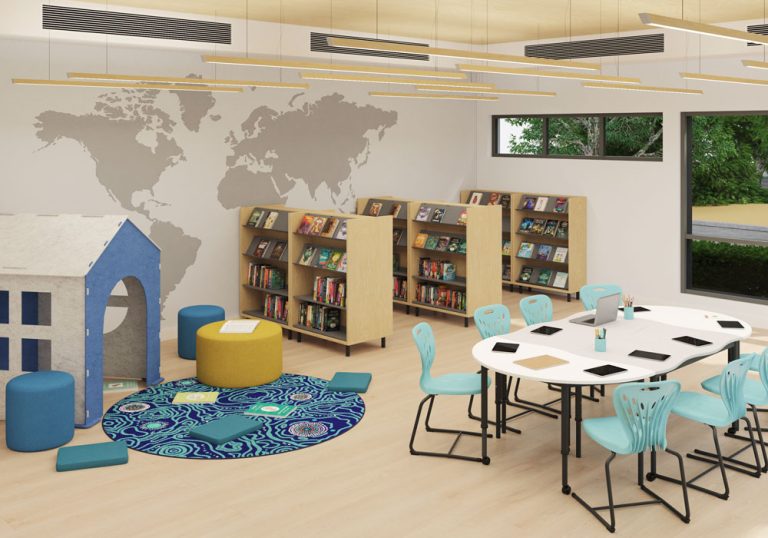
Using rugs to complement other ways of creating learning zones
While rugs can be used on their own effectively, they can also harmonise with other elements to craft comprehensive learning spaces. For example:
- Flexible Furniture: Pair rugs with adaptable furniture pieces, such as modular seating or adjustable tables, to create versatile learning zones that can easily accommodate different group sizes and activities.
- Visual Stimuli: Integrate rugs with audio art products like wall panels and free-standing cubbies to enhance the atmosphere of learning zones and reinforce key concepts or themes.
- Personalised Resources: Incorporate rugs into personalised learning areas stocked with supplementary resources such as books, sensory toys or digital devices, to support individual learning and regulation.
BFX’s rug collection, with exclusive designs from indigenous artists Merryn Apma, Shara Delaney and Nicole Taylor, perfectly complement the modular and flexible school furniture we offer. Examples of how they can be combined include:
- A floor-based group work area: combine a rug with soft, flexible furniture like our Cosy Bag Chairs, Comfy Cushions and Zen Desks.
- A reading corner: surround a circular rug like the Elements Round Rug with curved bookcases and modular sofas for a cosy reading nook.
A discovery space: combine a rug with low-modular storage furniture like the Mellow Setting to house musical instruments, puzzles, blocks or construction toys.
A Final Word
By offering distinct spaces for different learning activities, learning zones enable educators to optimise engagement, promote collaboration, and accommodate diverse learning styles and empower students to take ownership of their learning, all within a single classroom. Whether used on their own or to complement other elements, rugs can play a pivotal role in designing these zones effectively, adding an injection of colour, defining boundaries in flexible ways, and adding character to learning environments. Our team can work with you to create multi-functional, comfortable and versatile classrooms using the latest modular furniture and our exclusive rug collection – contact them today.


